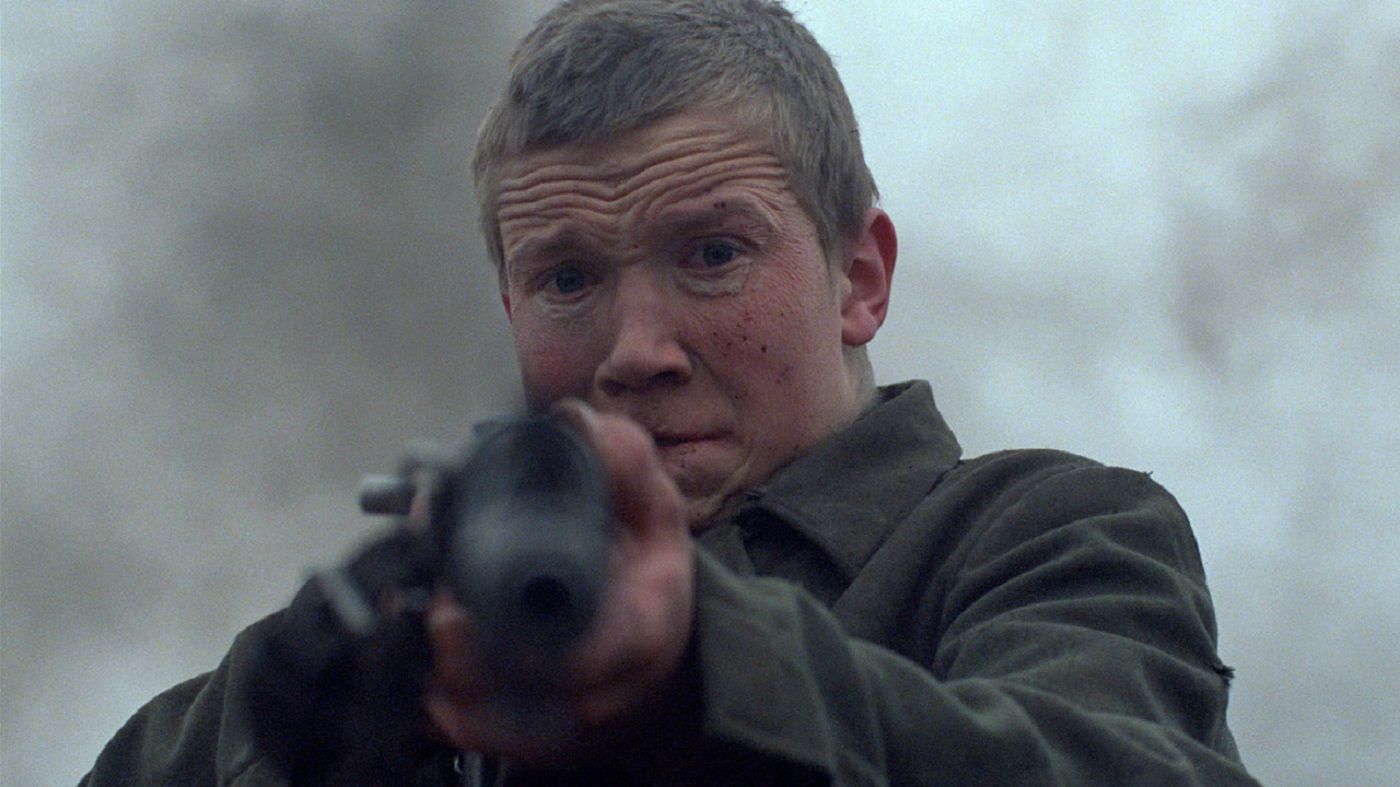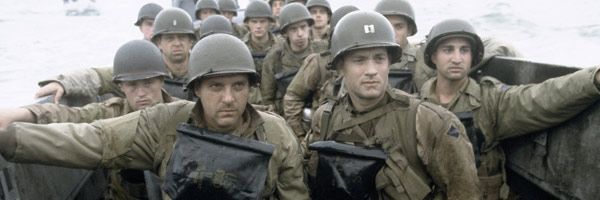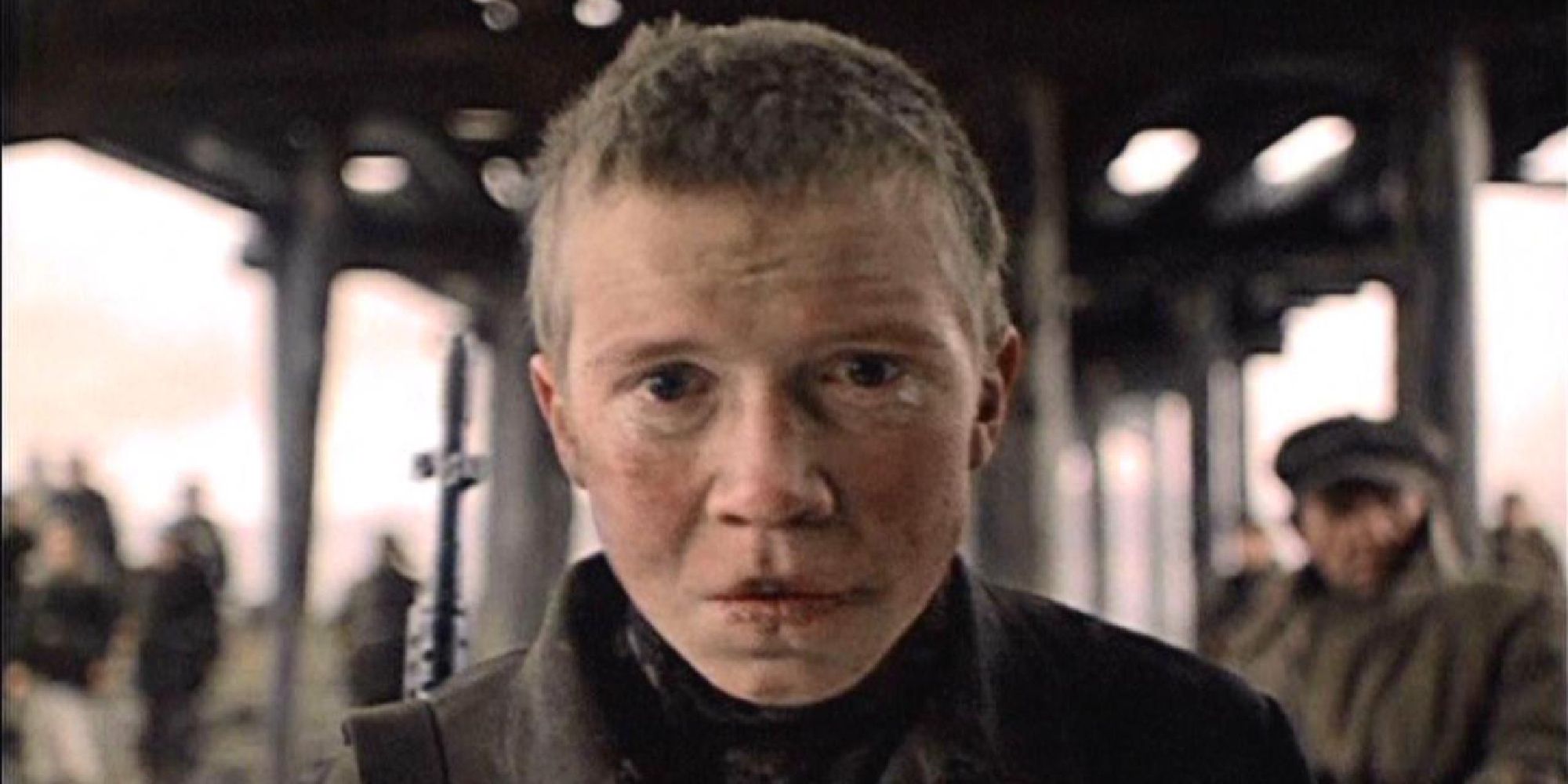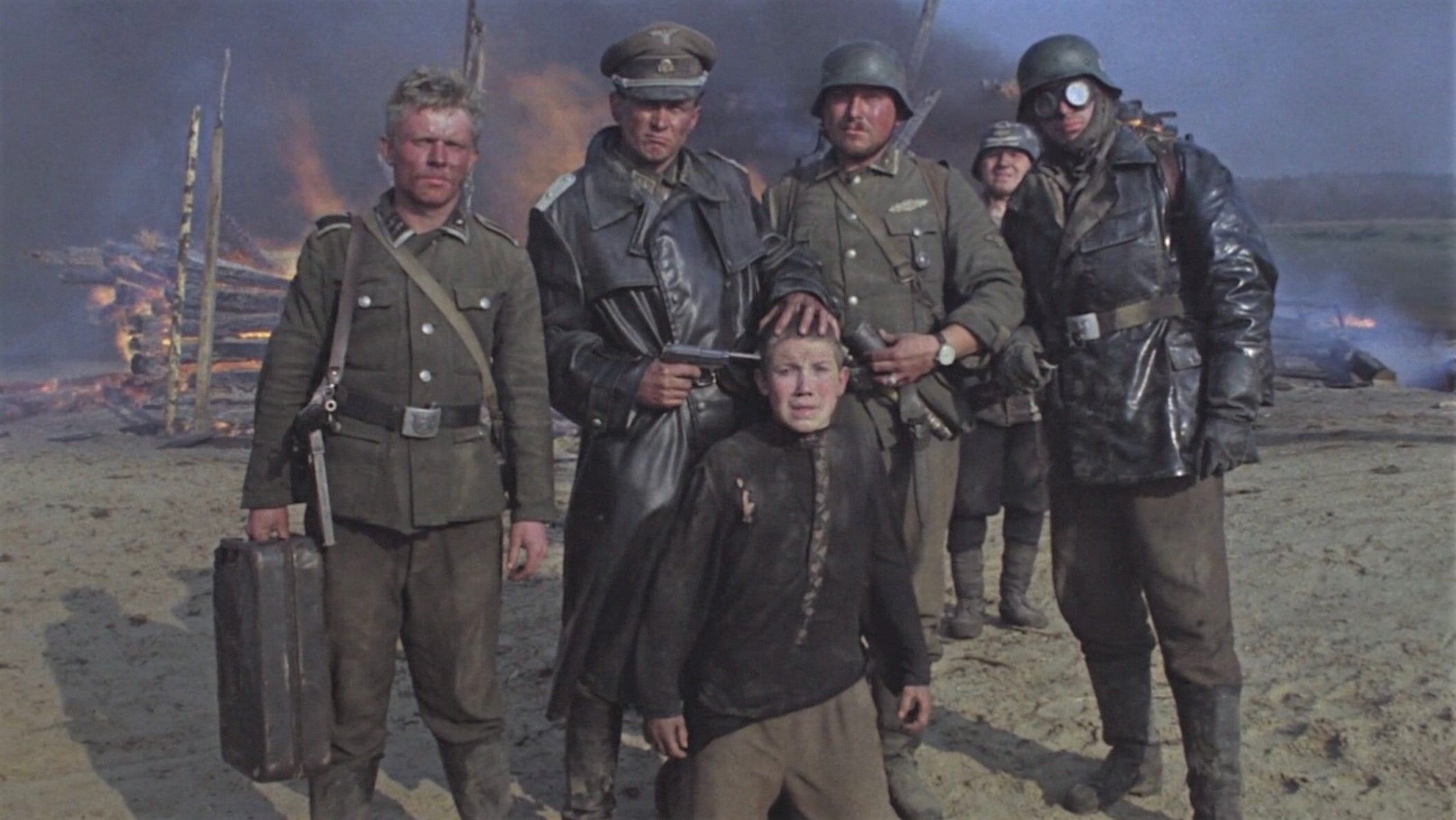Anti-war films have always faced an uphill battle. A director can use every technique under the sun to portray the brutality of war, creating films overflowing with graphic violence to truly hammer home the savageness of such an event, but they always come up against the same problem: just how well war translates to screen. It might be a cliché saying, but film is a visual medium, resulting in a format where meticulously crafted images and a deliberate use of body language can say more than an entire monologue ever could. Film is essentially one grand celebration of movement, and as a result it comes as no surprise that it lends itself incredibly well to the action genre. Watching Keanu Reeves shoot up a hotel lobby in The Matrix or a nightclub in John Wick is cinema in its purest form, an elaborate dance of tightly choreographed movement where not a single line of dialogue is required, and it’s hard to imagine such sequences having even half their impact had they been presented in a book or a piece of music instead. There is no better format for action than film, and while that has generated decades worth of entertainment for the popcorn-munching audiences of the world, it has proven to be a serious issue whenever filmmakers tackle the controversial topic of war.
A clear example of this can be seen in Steven Spielberg’s film Saving Private Ryan. Its iconic opening, set during the Omaha Beach assault as part of the Normandy landings, features some of the most explicit and harrowing images of war in cinema. Nothing epitomizes the saying that war is hell better than this, with Spielberg echoing as much in the film’s marketing campaign. “Every war movie… is an anti-war movie,” he told Newsweek, a quote that should encapsulate the film, but as every artist learns, how an audience views their work can be very different from how it was intended. The sequence is a staple on best action scenes of all time lists, and was ranked by TV Guide as the greatest movie moment in their 2001 list. While such inclusions are hardly done in bad faith, it does feel odd to see such a gruesome sequence based on a real-life tragedy be included on a "greatest movie moments" list alongside the rain dance from Singin’ in the Rain and Humphrey Bogart saying goodbye to Ingrid Bergman in Casablanca.
Saving Private Ryan is hardly the only war film to encounter this problem, and it is only the first in a long line that plague the genre. The necessity of condensing such horrific events into a three-act structure that fits into a standard running time can make the concept of an anti-war movie problematic from day one, running the risk of turning what should be a powerful wake-up call for humanity into just a commercial product. Films that are too overtly anti-war have struggled to receive the backing of major studios, and those that do often fail to achieve their stated goals while still producing something that will perform well at the box office. François Truffaut, one of the leading figures in the French New Wave, once said “there’s no such thing as an anti-war film,” and while many filmmakers have attempted to denounce it, it remains the defining quote on the subject.
But if there is one film that proves the opposite of Truffaut’s quote, it is the 1985 film Come and See. Directed by famed Soviet filmmaker Elem Klimov, the film depicts the occupation of Belarus by Nazi Germany in 1943 through the eyes of a young teenager called Flyora (Aleksey Kravchenko) who aspires to join the Belarusian resistance movement. The film proved difficult to make, with Klimov having to battle censorship from the Soviet authorities for eight years before being permitted to make the film (he had to comprise only with the film’s title, a stark change from the much bolder Kill Hitler he had originally wanted). Even then, production was far from easy, with its lengthy shooting schedule and graphic content taking its toll on everyone involved. The film received a positive response right from its premiere at the 14th Moscow International Film Festival, and in the decades since it has grown to become one of the most acclaimed films in the genre, becoming the benchmark to which all anti-war films must be compared to. Simply put, Come and See is a difficult film to watch, and its refusal to back down no matter how overwhelming it becomes makes its Hollywood equivalents look like child’s play in comparison. Almost 40 years on, it has lost none of its impact.
But how does Come and See accomplish a task that decades worth of films have failed at? The answer comes from its unflinching commitment to portraying the horror of World War II no matter what, resulting in one of the most unsettling films ever made. It excels at depicting the atrocity of war without ever falling victim to Hollywood sensationalism, with Klimov ensuring the viewer never conflates the events onscreen with just another piece of WWII entertainment. An example of this can be seen when Flyora returns to his home village following an attack by German paratroopers at the resistance movement camp. Accompanied by Glasha (Olga Mironova), a young girl who worked as a nurse at the camp, they find the village deserted. Flyora appears rather casual about the whole thing, even helping himself to some of his mother’s still warm cooking, but it’s clear something is very wrong. Glasha spots it first. The flies, a gentle buzzing that radiates throughout the entire village, and which gradually grows louder as the scene goes on. Eventually it becomes too much and Flyora runs out of the house, sprinting in a seemingly random direction while he shouts some illogical thoughts about his family hiding on a nearby island across a bog.
Glasha follows, but not before casting a single glance back at the village, and it’s here where the nightmare is confirmed. The bodies of the entire village’s population are stacked against a house, pilled up as though they were nothing more than animals in a slaughterhouse. The shot lasts for only a few seconds, but a few seconds is all that’s needed. The film does not linger on the violence, instead focusing on its consequences and the effect it has on its characters rather than the act itself. Leaving the audience to imagine the massacre makes it a considerably more terrifying moment, and demonstrates Klimov’s refusal to bend to the formula of a traditional war film. It’s a shot that will chill even the most hardened of viewers, and serves as the culmination of a sequence that is a masterclass in filmmaking. The gradual build in tension, heightened by its fantastic sound design and minimal use of dialogue, resembles a horror film more than anything else, an approach that guides the rest of the film.
But this is not simply a one-and-done sequence; rather, it's something that leaves a permanent mark on both its characters. In the following scene Flyora attempts to drown Glasha upon learning the truth, and shortly afterward tries to kill himself out of guilt. Both these events highlight the impact of war on both a physical and mental level, and showcases the film’s commitment to avoiding the usual clichés of the genre. Rather than including action only for entertainment purposes rather than adding to the overarching story, Klimov has the action linger long after it has concluded in a way few films replicate. Flyora does not use these events as motivation to grab a rifle and put an end to the scourge of Nazism once and for all, instead he becomes an empty shell of a person whose direction in life is decided entirely by those around him. The decision to present the narrative from the perspective of a 14-year-old boy may sound like a cheap trick to generate sympathy from the audience, but Klimov is careful to avoid shameless attempts at sentimentality. In the later sections of the film Flyora is barely even a character, instead just a passive vector to get the audience from one set piece to the next. By the time the credits roll he resembles an old man more than a teenager, and that’s only after experiencing war for just a few days. God only knows what the next two years will bring.
Come and See’s refusal to include the usual action scenes associated with this genre cuts to the heart of how it avoids the inherent problem with anti-war films. The previously mentioned village sequence circumvents this by skipping the spectacle of gunfire and explosions to focus solely on the aftermath, with other scenes employing similar techniques to ensure not a second could be misconstrued as simple entertainment. The most prominent of these, an extended sequence where an SS unit wreaks havoc upon the innocent residents of Perekhody, feels like a deliberate attempt to avoid the quote-on-quote "happy" endings that war films typically close on. No Allied forces are riding over the hill to save the day here; instead there’s just unimaginable horror made all the worse for how long the sequence goes on, with Klimov forcing the viewer to watch every second of the tragedy. The masterful editing, which cuts between scenes of violence and shots of those perpetrating it (all of whom are taking a sickening amount of enjoyment from it), is certain to fill the audience with utter disgust. It could also be viewed as a statement by Klimov, with the shots of people enjoying the violence somewhat mimicking how a typical audience would react to such a scene if presented in a more traditional film. But there’s certain to be no smiles from the audience here, with the sequence languishing in the nightmare for so long you’ll be tempted to hit the off button just to make it stop. None of these scenes have made it onto a "greatest movie moments" list, and rightfully so.
Come and See is a hard film to watch. Even for those who consider themselves jaded to movie violence, there’s an authenticity to Come and See that sets it apart from similar films, a feeling only made worse since so much of it is based on real events. Action may lend itself beautifully to the medium of film, but there’s an art to constructing an intricate sequence of movement that doesn’t just feel like a bunch of actors working off a script, with insane levels of work required to give audiences the blockbuster thrills they crave. But there’s also an art to producing such a sequence that is the opposite of fun. It might feel like a fool’s errand, running entirely at odds with the concept of such a scene, but in the proper context it can have a profound effect on the viewer. Come and See is an excellent example of such, and utilizes action in such a way as to avoid the biggest problem all anti-war films face. It’s one of the best films ever made. It’s also one that is very difficult to recommend. But, ultimately, it is a very important film, a visual document recounting one of the darkest times in our history, and one that all anti-war films should take inspiration from.





